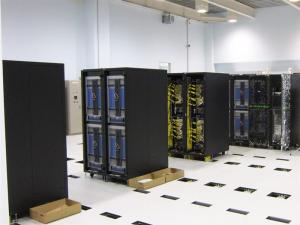Helios supercomputer to shed light on plasma physics
4 Nov 2011
The supercomputer that will be available to a scientific community of more than 1,000 European and Japanese fusion researchers in order to crack plasma physics has a name: "Helios," from the Greek word which means Sun, is expected to kick into operation in January 2012 and shed light on the analysis of experimental data on fusion plasmas, prepare scenarios for ITER operation, predict the performance of ITER and contribute to the DEMO and Broader Approach activities.
The first Call for Proposals was launched on 1 October and the deadline for submission of project proposals to be run on the computer is 1 December 2011. The call is part of the IFERC activities which fall under the Broader Approach Agreement.
The computer has already entered the race of the top 500 supercomputers and is expected to make it into the top 30 by 2012. With a computational power above 1 Petaflop, a memory exceeding 280 TB and high speed storage system exceeding 5 PB, the supercomputer will be at least 10 times more powerful than any existing system dedicated to simulations in the field of fusion in Europe and Japan.
The building to host Helios is located in Rokkasho, Japan, and some first images have been released. The upper floor of the building will accommodate the supercomputer in a room whose surface measures 640 m². The massive cooling system for the electric feed of 3 million watts consumed by the supercomputer will be located on the lower floor in a space of 900 m² and will be supported by water chillers located outside the building.
To learn out more about the Broader Approach and its projects click here.


